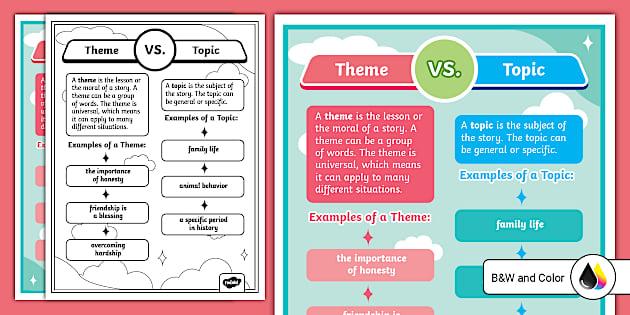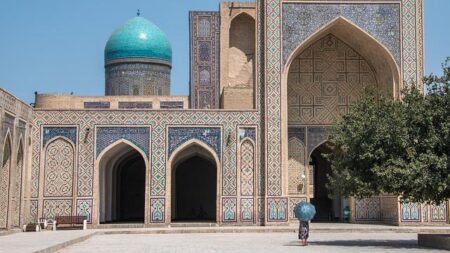Assessing the Impact of U.S. Aid Reductions on AfricaŌĆÖs HIV/AIDS Response and Pathways to Recovery
Over the past decade, Africa has made remarkable strides in curbing the HIV/AIDS epidemic, largely supported by substantial international aidŌĆömost notably from the United States. However, recent shifts in U.S. foreign assistance policies during the Trump administration have introduced significant obstacles to sustaining these gains. The scaling back of funding for key programs such as PEPFAR (PresidentŌĆÖs Emergency Plan for AIDS Relief) has left many African nations confronting a resurgence of challenges in prevention, treatment access, and healthcare infrastructure.
This article delves into how diminished American financial support has affected HIV initiatives across Africa, examines emerging strategies to mitigate these setbacks, and underscores the urgent need for renewed global collaboration to safeguard public health achievements.
Consequences of Reduced U.S. Funding on AfricaŌĆÖs HIV Programs
The contraction of U.S.-sourced funds has created a precarious environment for many African countries striving to maintain momentum against HIV/AIDS. With budgetary constraints tightening around critical health services:
- Rising New Infection Rates: Interruptions in antiretroviral therapy (ART) availability risk reversing downward trends in transmission rates.
- Diminished Healthcare Capacity: Clinics face shortages of trained personnel and essential medical supplies.
- Erosion of Prevention Efforts: Community outreach and education campaigns are increasingly underfunded or discontinued.
A recent report from UNAIDS highlights that after years of steady decline, new infections across sub-Saharan Africa have plateaued or even increased slightly since 2020ŌĆöa worrying sign linked partly to funding instability.
Adaptive Responses: Exploring Alternative Funding Avenues
African governments and civil society organizations are actively seeking innovative solutions to bridge financing gaps caused by reduced external aid. Some promising approaches include:
| Approach | Description & Benefits |
|---|---|
| Public-Private Collaborations | Tapping into corporate social responsibility programs and private sector investments enhances resource mobilization while building local expertise. |
| Grassroots-Led Initiatives | Cultivating community ownership through peer educators strengthens trust and improves program reach among vulnerable populations. |
| Diversified Financing Models | The use of social impact bonds, microfinance schemes, and digital fundraising platforms attracts new capital streams tailored for sustainable intervention delivery. |
The Ripple Effects on Treatment Accessibility and Public Health Outcomes
The withdrawal or reduction of consistent funding disrupts not only service provision but also patient adherenceŌĆöa cornerstone for effective viral suppression among people living with HIV (PLHIV). Clinics struggling with limited budgets often cannot maintain regular ART distribution schedules or follow-up care protocols essential for preventing drug resistance development.
Data from recent years illustrate this troubling trend: between 2017 and 2023, patients receiving ART dropped dramaticallyŌĆöfrom approximately 15 million individuals down to just over six millionŌĆöreflecting a nearly 60% decrease correlating closely with diminishing financial support levels.
| Year | Total Funding ($ millions) | # Patients Receiving ART (millions) |
|---|---|---|
| 2017┬Ā┬Ā┬Ā ┬Ā┬Ā┬Ā┬Ā ┬Ā┬Ā┬Ā┬Ā ┬Ā┬Ā┬Ā┬Ā ┬Ā┬Ā┬Ā┬Ā┬Ā┬Ā ┬Ā┬Ā┬Ā┬Ā┬Ā┬Ā ┬Ā┬Ā┬Ā┬Ā┬Ā┬Ā ┬Ā┬Ā┬Ā┬Ā┬Ā┬Ā┬Ā┬Ā┬Ā┬Ā┬Ā┬Ā┬Ā┬Ā┬Ā┬Ā┬Ā┬Ā┬Ā┬Ā┬Ā┬Ā┬Ā┬Ā┬Ā┬Ā┬Ā┬Ā┬Ā┬Ā┬Ā┬Ā┬Ā┬Ā┬Ā┬Ā┬Ā┬Ā┬Ā┬Ā┬Ā┬Ā┬Ā┬Ā ┬Ā┬Ā┬Ā┬Ā ┬Ā┬Ā┬Ā┬Ā ┬Ā┬Ā┬Ā┬Ā1500 15 ┬Ā┬Ā┬Ā┬Ā ┬Ā┬Ā┬Ā┬Ā ┬Ā┬Ā┬Ā┬Ā ┬Ā┬Ā┬Ā┬Ā ┬Ā┬Ā ┬Ā┬Ā ┬Ā┬Ā ┬Ā┬Ā ┬Ā┬Ā ┬Ā ┬Ā ┬Ā ┬Ā ┬Ā ┬Ā ┬Ā ┬Ā ┬Ā ┬Ā ┬Ā ┬Ā ┬Ā ┬Ā ┬Ā |
||
|
1400 14 |
||
The data clearly demonstrate that sustained investment is indispensable if treatment coverage is not only maintained but expanded toward global targets such as UNAIDSŌĆÖ ŌĆ£95-95-95ŌĆØ goals aimed at ending AIDS as a public health threat by 2030.
Pioneering Solutions Amidst Constraints: Technology & Community Mobilization Combined Efforts Are Key!
- MHealth Innovations: Mobile applications enable remote monitoring and appointment reminders, helping patients adhere better despite clinic limitations. For example, a digital hub launched recently in Guinea-Bissau connects isolated communities directly with healthcare providers via telemedicine platforms.
- Civic Engagement: African NGOs increasingly empower local leaders to champion awareness campaigns tailored culturally and linguistically, cultivating trust crucial during times when formal systems falter.
- Diversified Partnerships: Nations are forging alliances beyond traditional donorsŌĆöincluding regional economic communitiesŌĆöto pool resources effectively.
- Sustainable Financing Reforms: Pursuing transparent budgeting processes coupled with accountability mechanisms reassures stakeholders about efficient fund utilization.
- < strong > Strengthening Local Workforce :< / strong > Investing heavily into training frontline healthcare workers ensures quality service delivery even amid resource scarcity .< / li >
- < strong > Deepening Community Involvement :< / strong > Empowering affected populations fosters program relevance , acceptance ,& participation enhancing outcomes .< / li >
- < strong > Harnessing Digital Tools :< / strong > Expanding telehealth capabilities bridges geographic barriers especially vital given rural demographics prevalent across much continent .< / li >
- < strong > Integrative Health Services :< / strong > Combining HIV care alongside maternal health , tuberculosis control etc ., reduces stigma while optimizing resource use .< / li >
Ultimately,safeguarding continuous access to life-saving therapies requires multi-sectoral cooperation focused on innovation alongside traditional methods.
Nurturing Resilience Through Collaborative Frameworks & Sustainable Care Models Across Africa
Tackling current challenges demands an integrated approach where governments work hand-in-hand with NGOs,international agencies ,&&&&&&amp;amp;amp;amp;amp;amp;; private enterprises converge strategically . Priorities include :
An overhaul towards diversified financing models is equally critical ŌĆö blending government allocations , donor contributions , philanthropic grants plus innovative instruments like social impact bonds can create more resilient funding ecosystems.
| Funding Source | Allocated Amount (USD) | Focus Population |
< tr >
U.S Global Fund | $500 million |
< tr > | National Government Programs < td >$200 million< td> Rural residents n < / tr >nn < tr>n < td scope="row"> International NGOs< / td>n < td>$150 million< / td>n < td>< Women & children vulnerable groups< / td>n < / tr >“, “Future Directions”: “ Looking Ahead: Sustaining Momentum Against HIV/AIDS Amid Changing Aid Landscapes“, “Conclusion”: “< p > The decision by previous U.S administrations leading up through early-mid decade periods significantly reshaped how African nations manage their fight against one pervasive epidemic ŌĆöHIV\/AIDS.< p>This shift necessitates urgent adaptation through innovation combined with strengthened partnerships both within continent borders plus globally.< p>If stakeholders prioritize transparency accountability alongside inclusive engagement then there remains hope that progress achieved over decades will not be lost but rather serve as foundation upon which future victories build.“, “SEO Keywords”: [“HIV response”, “U.S. funding cuts”, “Africa”, “antiretroviral therapy”, “PEPFAR”]}
|
|---|







